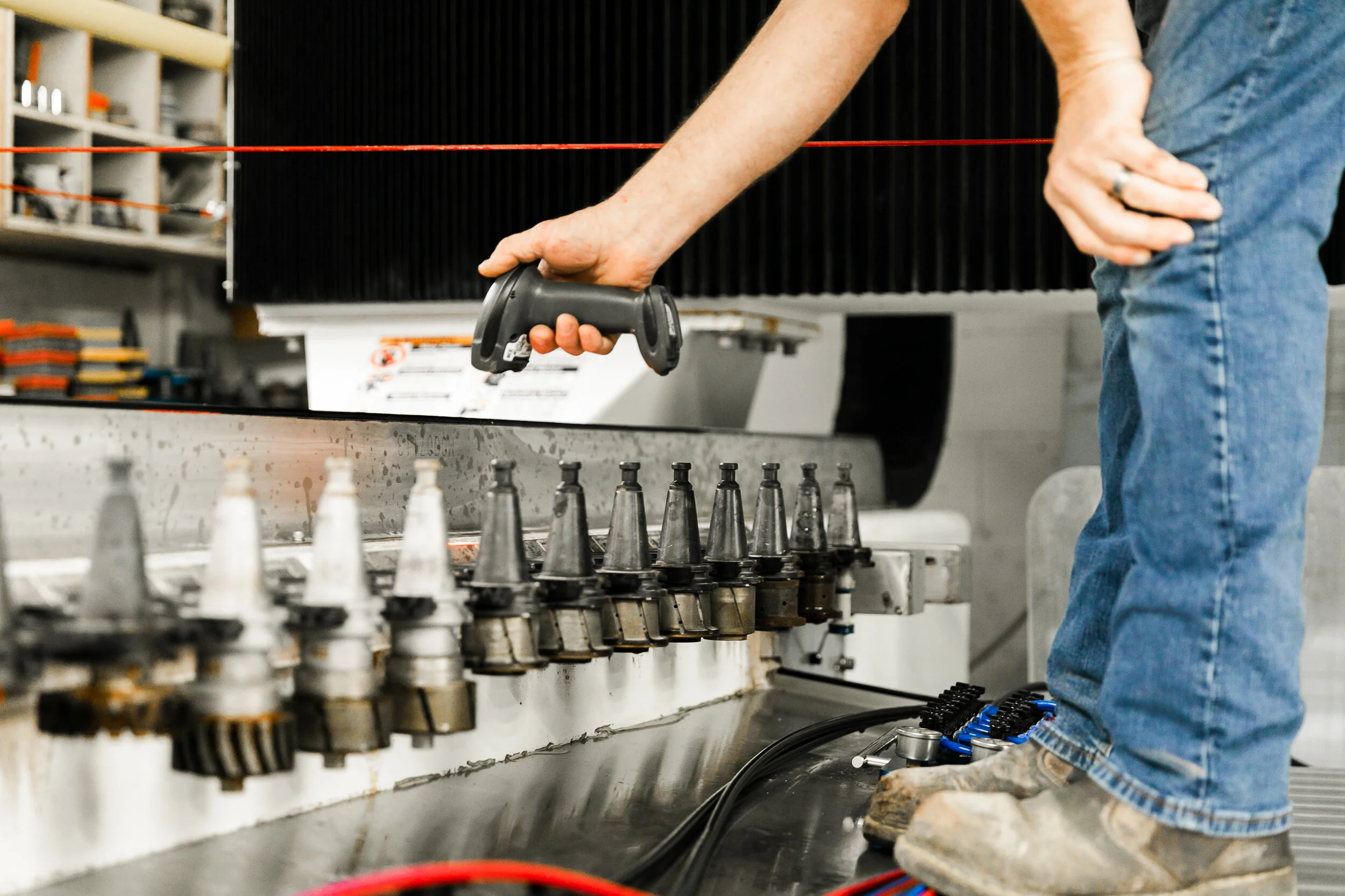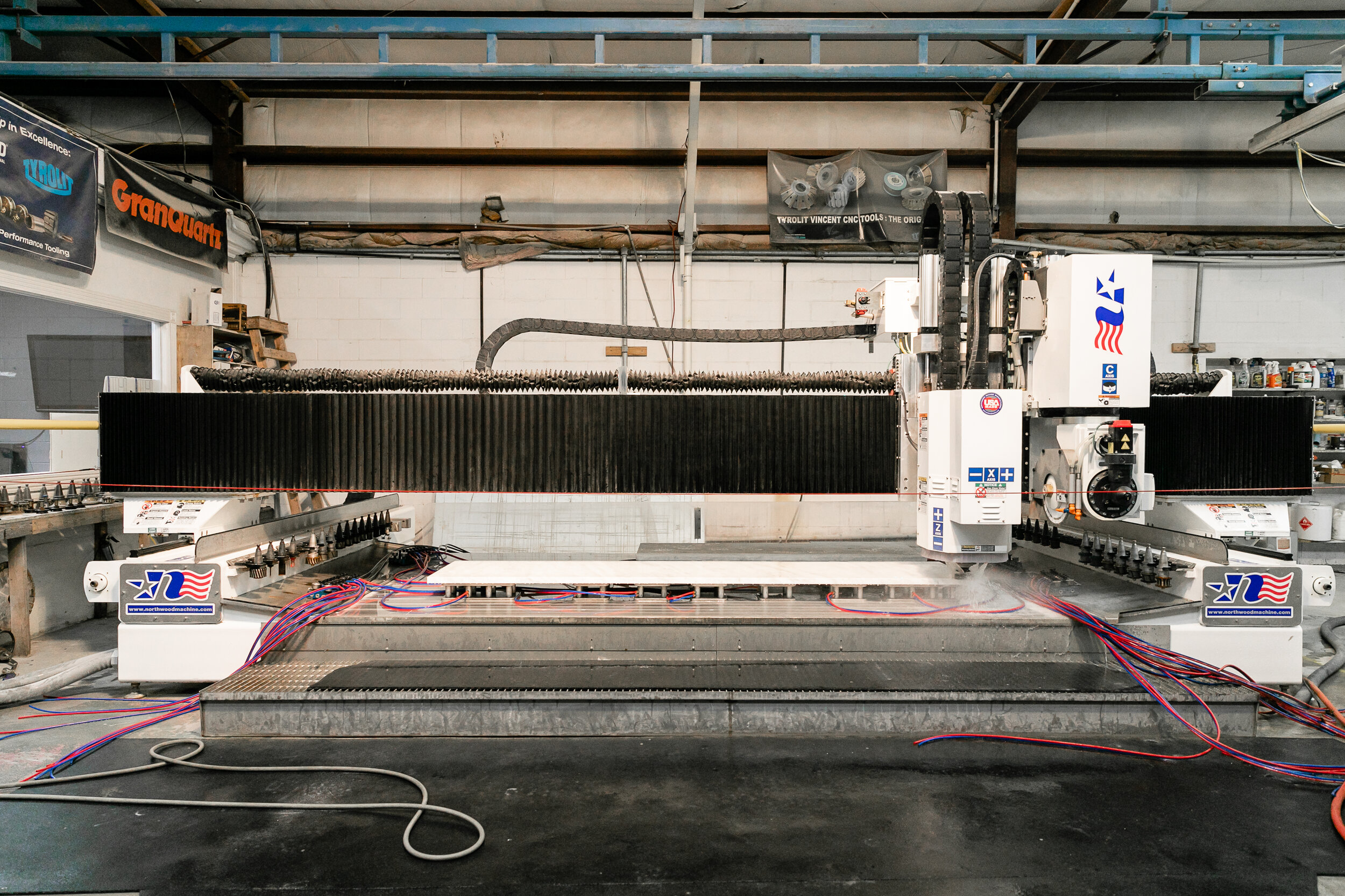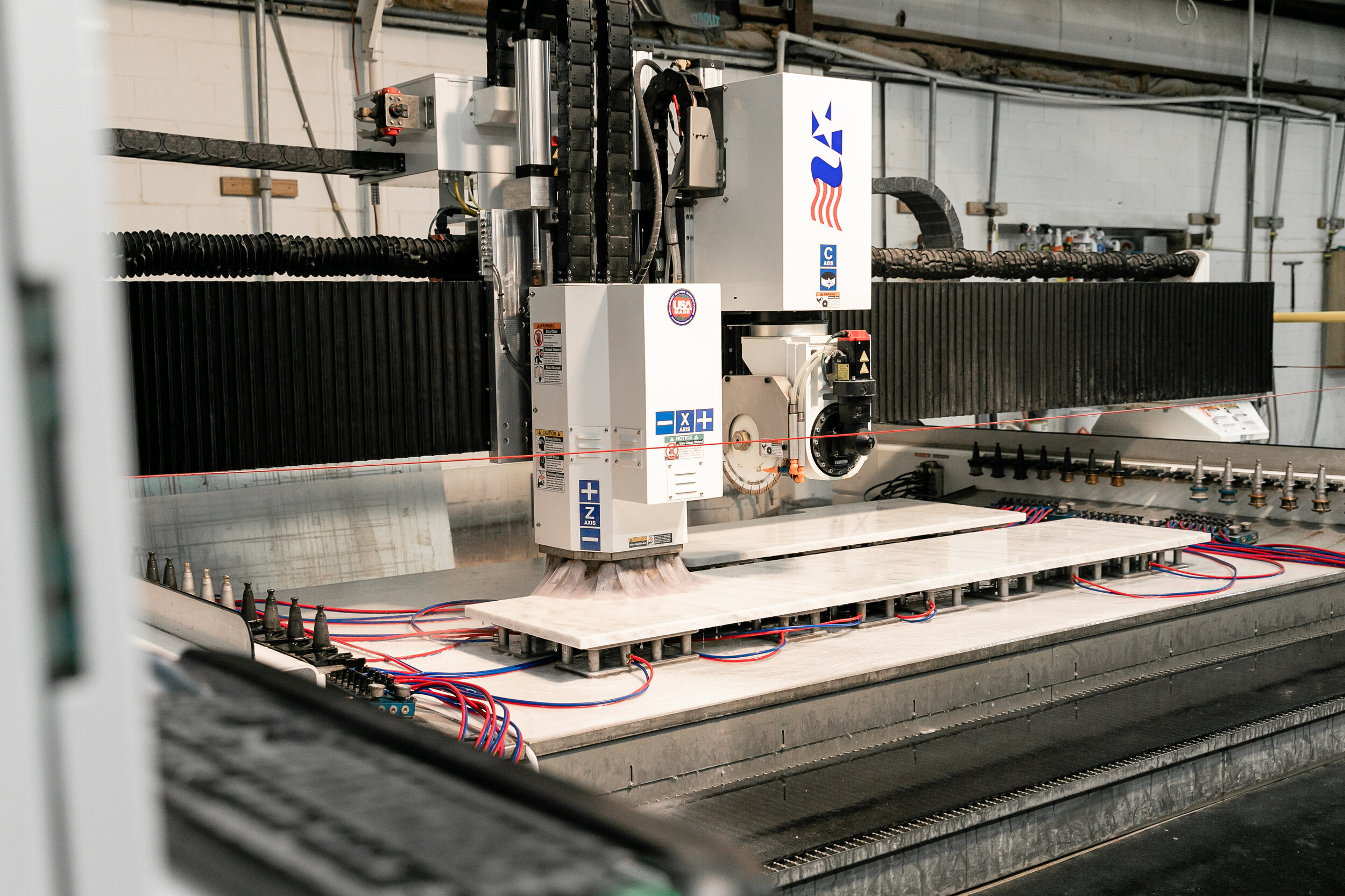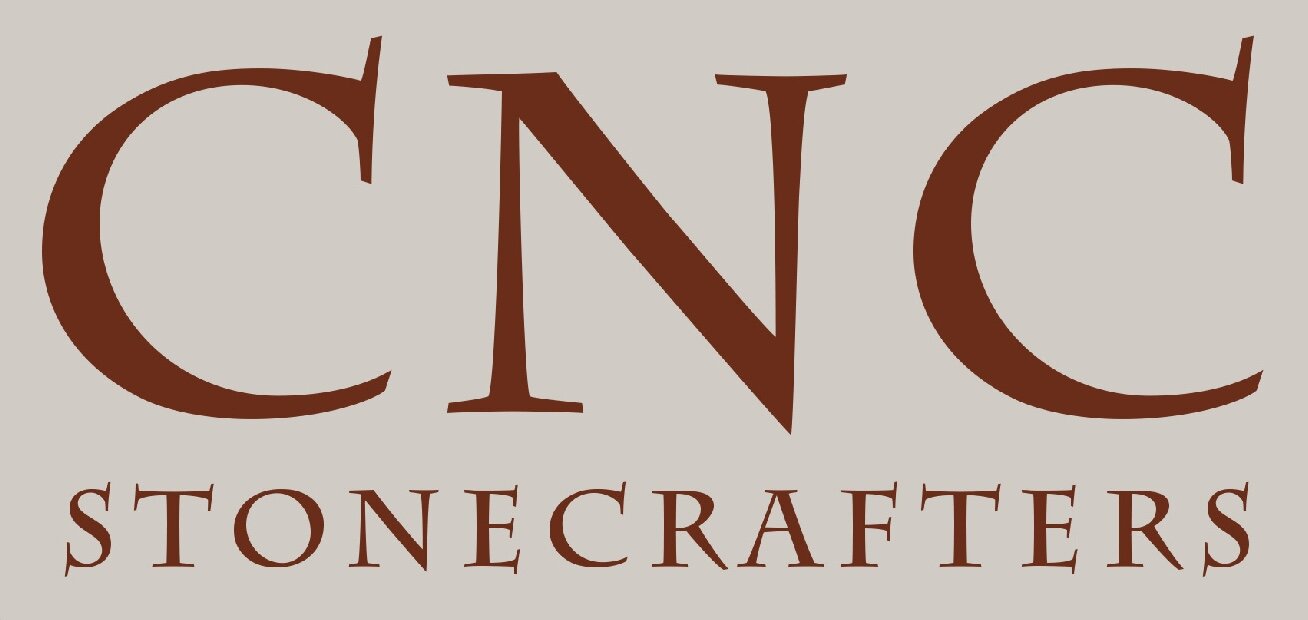
Fabrication Technology
How your countertop is made will affect the finished product installed in your kitchen.
Digital templating produces an accuracy that is just not achievable with wood or cardboard templates.
A scribed fit leaves no gap at the wall. A “straight cut” counter-top is faster and cheaper to produce but may result in excessive or uneven caulking or even worse. If your walls are not perfectly straight the installers may chop away drywall to slide the counter into the wall. They do this to hide the gap. You then get drafts especially on exterior walls as well as uneven overhangs.
Sub-standard stone shops still use hand shaping with grinders and hand routers which produce wavy, uneven edge profiles and radius by “eyeballing it”. Big and heavy 17,000 pound CNC Routers produce smooth, even and perfectly shaped radius with digital perfection. The difference is as dramatic as comparing a crackly old phonograph vs CD sound quality.
How the sink is mounted to the stone, how the stone is sealed, how the seams are prepared and made affect the finished product. A saw cut seam looks jagged and fat while a CNC prepared seam is tight and consistent. A company with a saw and a few hand tools will look like but not compare to a CNC shop. They are selling price not quality. Be careful
Digital Templating
At CNC Stonecrfters a Proliner digital templating system will be used to gather the data points for your cabinets and wall shapes. This can be taken directly on site at your home or it can be done based upon a physical template back at the shop. Either way the data points are always gathered via the Proliner digital templating device and then CAD software manipulates those data points into a CNC computer language that can be programmed and sent directly to our CNC machines.
Slab Smith Perfect Match Software
We use Smith Perfect match Software for very dramatic slabs. This assists us in both layout and grain matching. First, a photo of the slab or slabs is taken at high resolution in a specially designed slab fixture. Then the images are imported into Slab Smith Perfect Match software so that counters and seam positioning upon your exact slabs can be seen prior to our cutting the stone.
CNC Sawjet Technology
Our CNC Sawjet uses both a Saw blade and a 50,000 psi stream of water to physically cut the stone to size. We cut the stone a little oversize so that our CNC stone router can precisely mill and final shape each profile. The CNC Sawjet is the very latest technology. It uses a camera system to align and position the digital versions of your counter-top upon the slab you have selected.
CNC Stone Router Technology
This is our CNC Stone Router. It is specifically designed to size and shape stone counter-tops. It is made in the USA and uses CAD software to program it’s motions. Once programmed and loaded with stone it will size a piece of counter-top by using a milling wheel to remove excess material. This will shape the pieces to match the programmed shape. It will also calibrate the thickness of the slab where it overhangs the cabinets.
Next it will use various profile wheels to shape the edge profile. Finally it will use a .DXF file and special diamond tooling bits to shape the sink cutout if there is one. Sink mounting anchors are also programmed into the CNC stone router.
Polishing by Hand
Hand Polishing is a choice of quality. Our CNC’s will polish but the best possible polish is one that has no lines which are still more than possible with CNC or machine polishing. It’s more expensive and labor intensive but we believe that it make the difference that lasts a life time. Many shops use wax to achieve a high shine. The problem with wax is that it doesn’t last and while it hides the lines, when the wax wears away you are left with a great price and not so great job. A hand polish is actually achieved by polishing the stone evenly and thoroughly and will last a lifetime.
Rodding Preparation
Before we make a sink hole or a rail-less cook-top cutout, we cut channels into the underside of the stone to install 3/8 threaded steel rods. This reinforces the area of the stone that is most vulnerable to cracking. in front and in back of the sink or cook top is only vulnerable to cracking due to the small amount of stone left after making the hole opening.
Seam Preparation
The grooves you see in the side of the stone indicate that this is exactly where two halves of a countertop are going to come together. We do this to ensure that the color matched epoxy has a place to grab and form a “chemical biscuit”.
Prior to grinding grooves into the two halves, both seam faces are milled to precision with progressively finer diamond wheels on the CNC. We do this to make the seam sharp and crisp as that stone’s geology will allow. Not all stones mill the same. To get the tightest possible seam we use CNC technology to prepare the seam. It takes time and money to do it right the first time!
Sealing Granite Countertops
Using the right sealing material for various stone types is critical. We use three different types of sealer depending upon the stone we are sealing and where we are sealing it. In our shop we use a very effective base coast sealer that is a petroleum based and therefore a flammable and fumeous product. In your home, we will install a 2nd seal coating. This 2nd coat is water based and complements the base coat. The third type of sealer offered comes with a 15 year stain protection warranty from Dupont in conjunction with Daltile and costs additional. You may also purchase your own granite sealer at any major home improvement store. We recommend periodically testing your granite’s seal by carefully dripping water on your countertop—if the water is absorbed, it is time to reseal. If the water beads and never absorbs, your seal is still good!
Quality Control Inspection
QC Inspection inspections takes place before the stone is brought to our facility. Once they arrive to us, slabs are individually inspected. Fabrication and manufacturing inspections take place throughout our entire handling process. The stone is also inspected for many parameters during installation . Continuous improvement and customer feedback are reported back into our manufacturing, sales, customer service and installation processes.




























